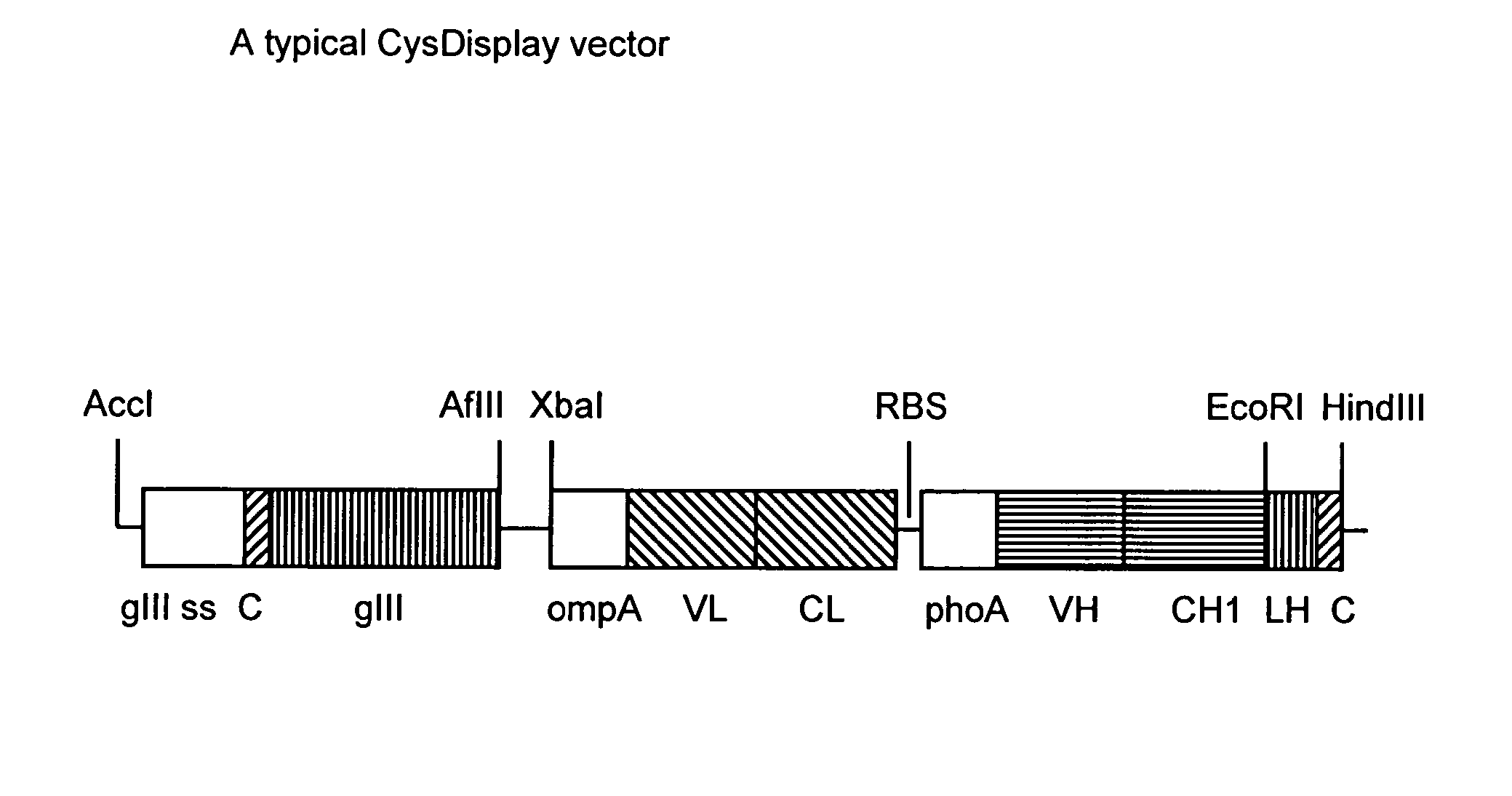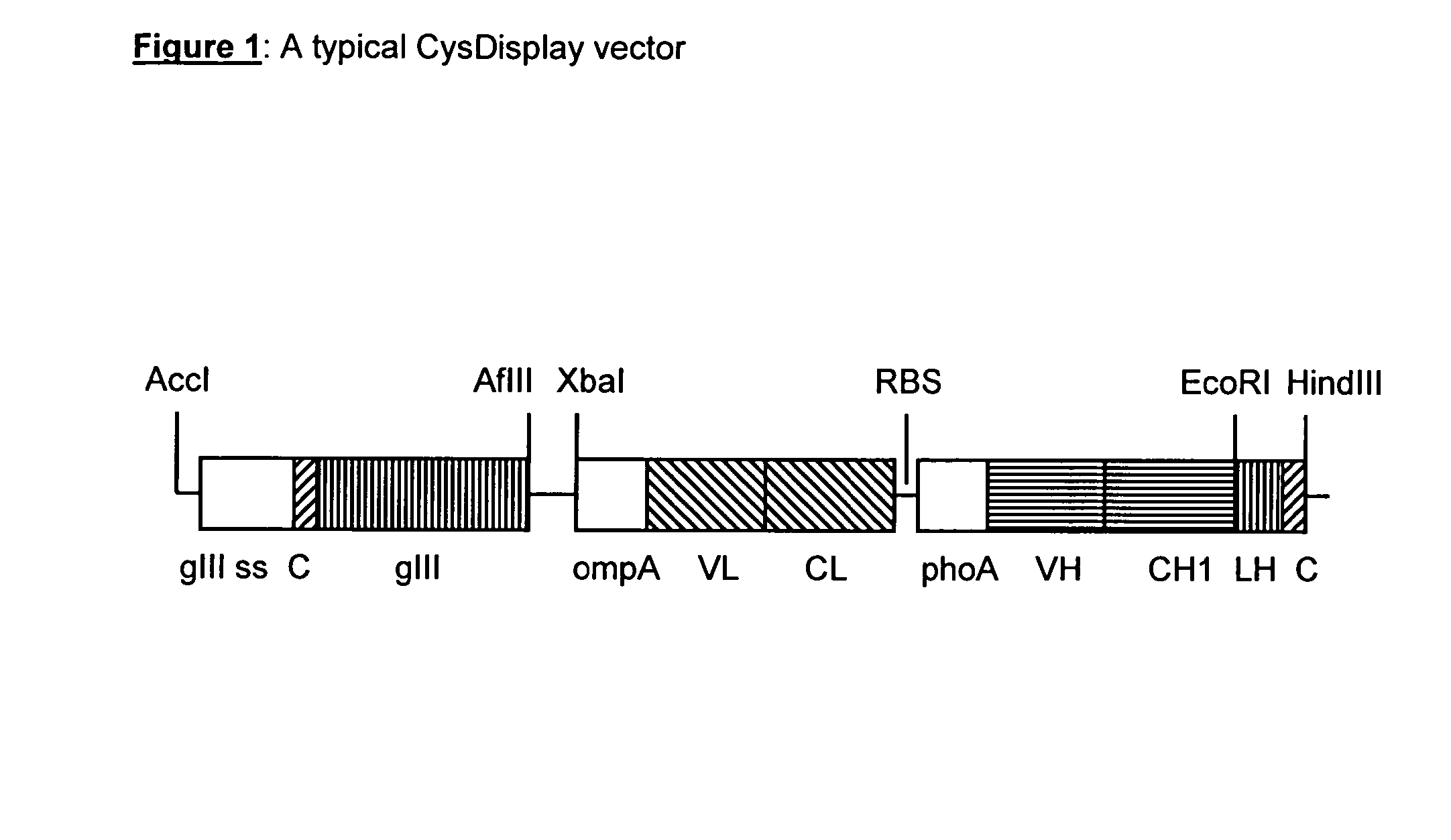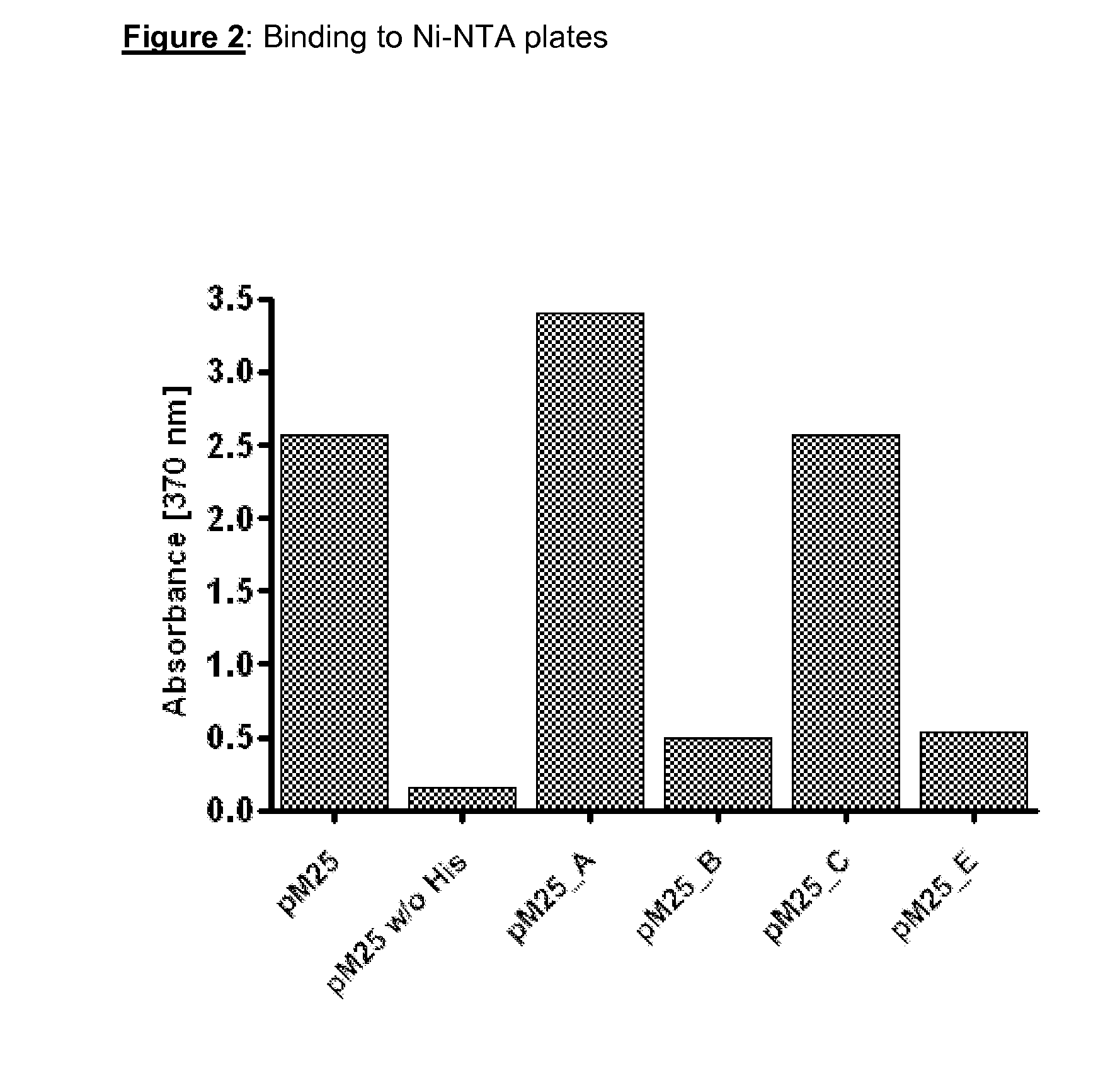Methods for the formation of disulphide bonds
a disulphide and bonding technology, applied in the field of disulphide bonding methods, can solve the problems of loss of most interesting binders which bind with high affinity to the target, none of the studies above describe, etc., and achieve the effects of increasing the reactivity of said cysteine residues, increasing functional display rate, and increasing display ra
- Summary
- Abstract
- Description
- Claims
- Application Information
AI Technical Summary
Benefits of technology
Problems solved by technology
Method used
Image
Examples
example 1
Construction of Novel Vectors
[0166]Vectors are based on known expression vectors described in WO 01 / 05909. Heavy and light chains of Fab fragments are expressed from a dicistronic phagemid under the control of the lac promotor / operator region. The first expression cassette comprises the signal sequence ompA and the variable and constant domain of the light chain. The second expression cassette comprises the signal sequence phoA and the variable and constant domain of the heavy chain. Heavy and light chain are not linked via a disulfide bond. Gene III is also encoded on the same vector. The cysteine residues forming the disulphide bond are located at the N-terminus of pIII and at the C-terminus of the heavy chain Fd-fragment. The main features of a typical CysDisplay vector are shown in FIG. 1.
[0167]New display vector variants (pMORPH25 versions A, B, C and E) have been constructed based on the pMORPH25 vector, which is a derivative of pMORPH23 (described in WO 04 / 013276). The sequen...
example 2
Phage Binding to Ni-NTA Plates
[0171]The six histidine residues directly N-terminal to the reactive cysteine residue in pMORPH25 confer the bacteriophage particles with the capability to bind to Ni-NTA plates. In version A a lysine residue was introduced C-terminal to the reactive cysteine residue. In versions B, C and E of pMORPH25 this stretch of six histidine residues was destroyed by way of introduction of at least one lysine residue into each of said hexa-histidine stretches. Presumably, this should lead to a loss of the capability of the bacteriophage particles displaying the Fab fragments to bind to Ni-NTA plates.
[0172]Bacteriophage particles displaying Fab fragments were produced via standard techniques (see e.g. Kay et al, 1996 and Example 2.2 of WO 01 / 05909). Binding of bacteriophage particles to Ni-NTA plates was determined as briefly outlined. Phage particle (8×108 / well), which were pre-incubated for 2 hours with blocking solution (Chemiblock diluted with TBS, 0.1% Tween2...
example 3
Relative Display Rate
[0174]The relative display rate of phage particles of the various vector constructs (version A-version E, as outlined in Example 1) were determined as described below.
[0175]Phage particles were produced by standard procedure (see e.g. Kay et al, 1996 and Example 2.2 of WO 01 / 05909). The phage particle number and the antibody display rate of an unknown phage particle solution was determined in two independent ELISA experiments.
[0176]The Phage particle titer of a phage preparation is determined via an anti-pIII capture ELISA, and the antibody display rate of a phage preparation was determined via an anti-Fd capture ELISA. The relative display rate is defined as the anti-Fd signal divided by the anti-pIII capture ELISA signal.
[0177]Maxisorp Nunc-Immuno microtiter plates were coated with 100 μl of a 2.5 μg / ml anti-pIII capture antibody solution (MoBiTech, Göttingen, Germany) and a second plate with 100 μl of 0.5 μg / ml anti-Fd capture antibody solution for 12 hours a...
PUM
| Property | Measurement | Unit |
|---|---|---|
| temperature | aaaaa | aaaaa |
| temperature | aaaaa | aaaaa |
| nucleic acid | aaaaa | aaaaa |
Abstract
Description
Claims
Application Information
 Login to View More
Login to View More - R&D
- Intellectual Property
- Life Sciences
- Materials
- Tech Scout
- Unparalleled Data Quality
- Higher Quality Content
- 60% Fewer Hallucinations
Browse by: Latest US Patents, China's latest patents, Technical Efficacy Thesaurus, Application Domain, Technology Topic, Popular Technical Reports.
© 2025 PatSnap. All rights reserved.Legal|Privacy policy|Modern Slavery Act Transparency Statement|Sitemap|About US| Contact US: help@patsnap.com



